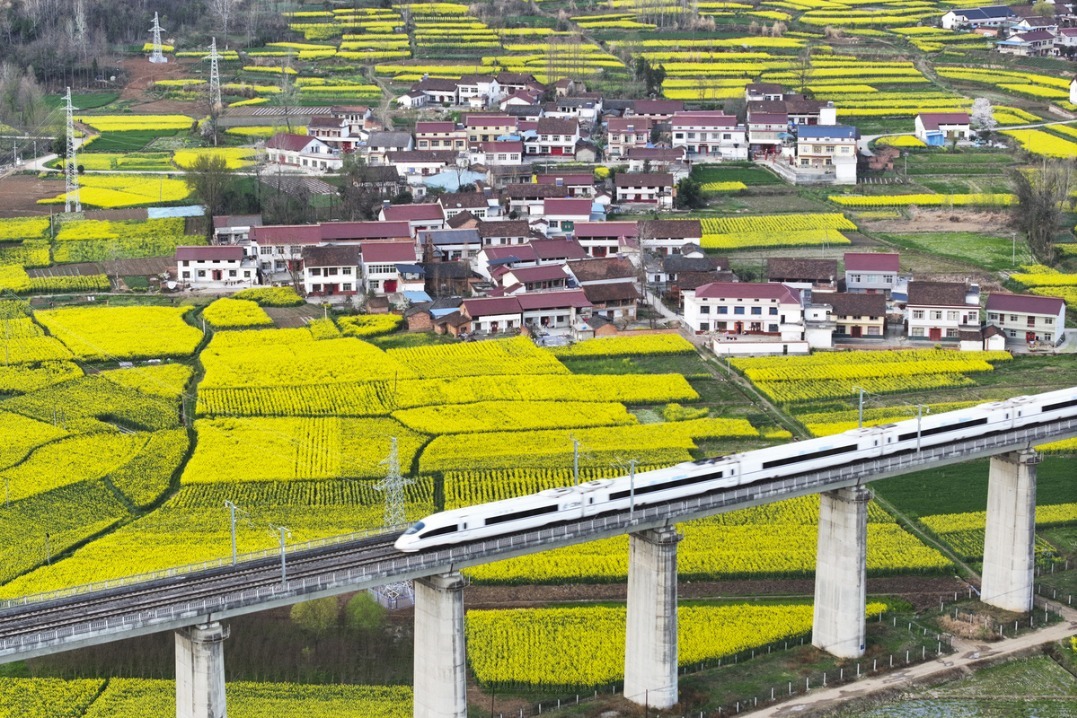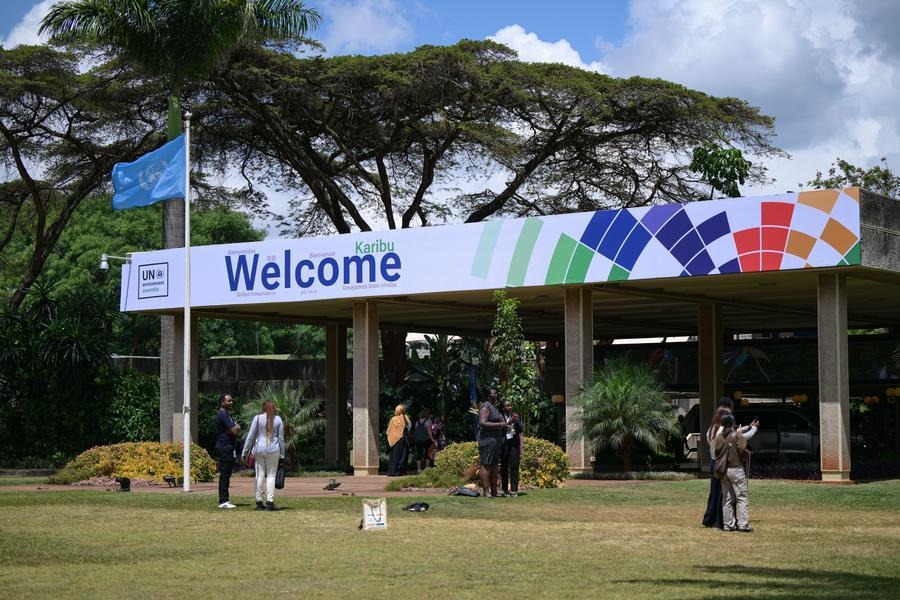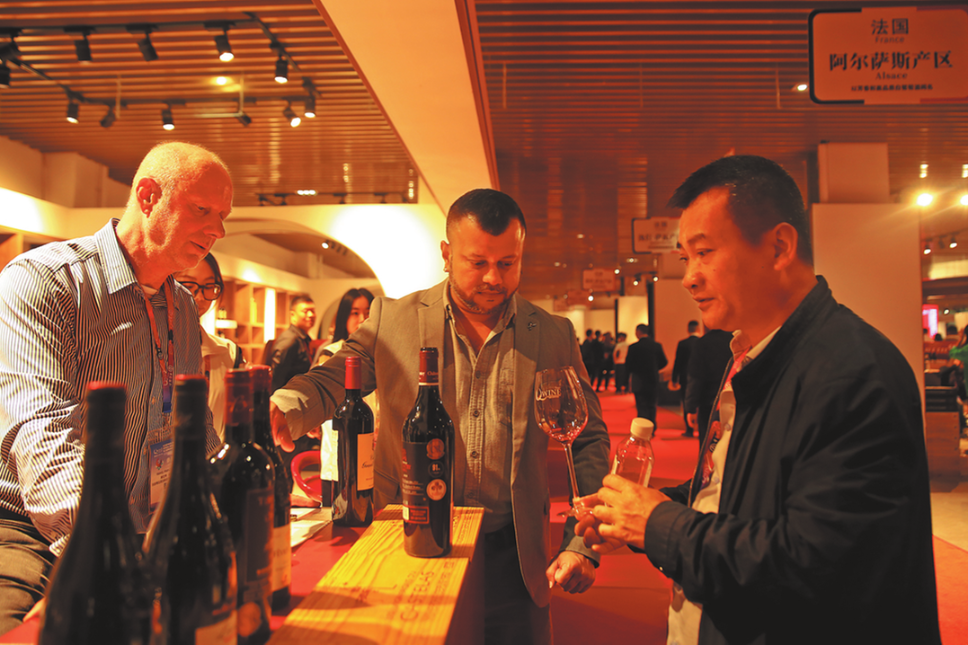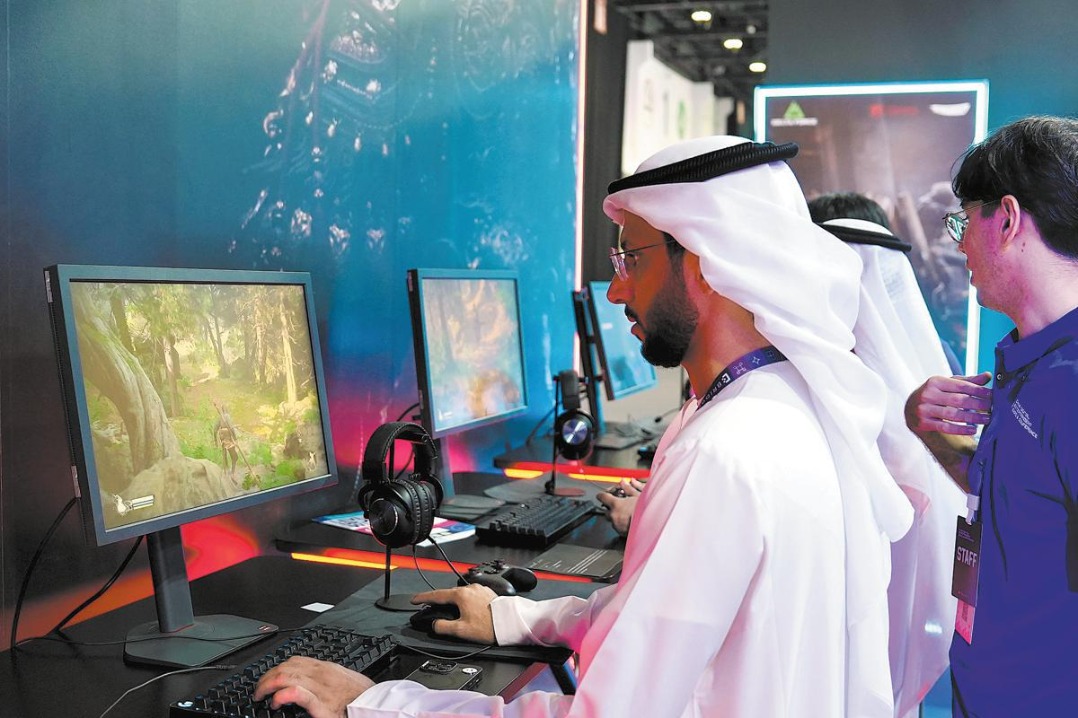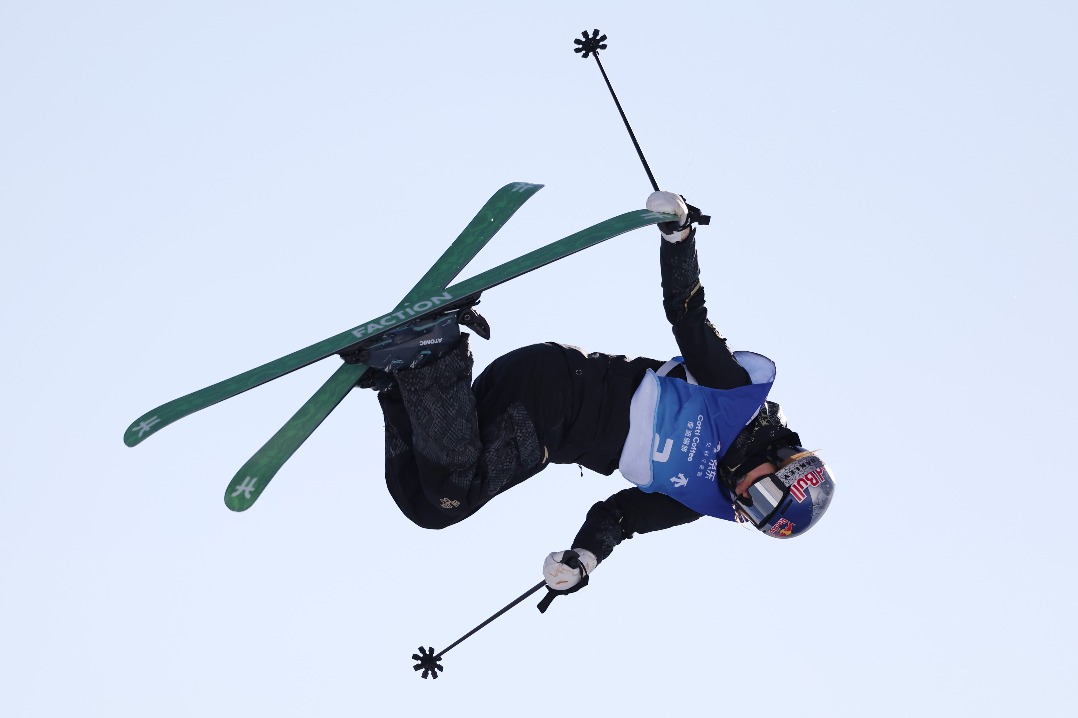Nobel laureate shares vision for molecular machines at Fudan University
By Zheng Zheng | chinadaily.com.cn | Updated: 2024-05-11 15:29

Bernard Lucas Feringa, the 2016 Nobel laureate in chemistry, presented his pioneering work constructing molecular machines that operate on tiny scales at a lecture at Fudan University on Friday, providing visions from the frontiers of nanoscience.
Titled "The Art of Building Small: From Molecular Switches to Molecular Motors", Feringa's talk delved into his team's designs and constructions of molecular-scale creations at the Shanghai Master Forum on Science.
At the core of Feringa's work lies the concept of molecular machines — devices assembled from different molecular components that can mimic machinery by moving in response to external stimuli. Among his key innovations are molecular switches that can toggle between two states, analogous to 0 and 1 in computing, enabling these state transitions at the nanometer scale.
While this is a very fundamental area, Feringa described how nano-machines could one day transform the world. "I'm a scientist. I'm not so good at predicting," he said. "I would say the best way to predict the future is to invent it."
"We've made antibiotics that can be switched on and off relying on the light, and we can control to some extent the anti-cancer treatment. We can control the growth of bacteria and the antibiotic activity. The surgeon can irradiate the light, switch it on, and treat the disease," he said.
He also described a future where micro-robots, powered by molecular machines, could be injected into the body to navigate blood vessels and make repairs on diseased cells. These moving, molecular-scale machines, just like larger classical motors but tiny enough to enter the human body, could revolutionize medicine by targeting pharmaceuticals exactly where required, he explained.
Another major focus is molecular motors to re-create engines at the micro scale as key components of molecular machines. "Once we control motion at the molecular level, it enables control over all other forms of motion — opening vast possibilities for developing new futuristic materials," Feringa said.
The nano-cars developed by Feringa's team can already perform motions such as rotation and translation. And they now have motors that can rotate 10 million times per second. In the future, Feringa believes they will find substantive applications on an even grander scale.
According to Feringa, the true adventure lies not just in building such futuristic technologies, but also in the joy of fundamental discovery itself — asking scientific questions for which nature may hold answers.
"I was so intrigued by Mother Nature — how your muscles move, how you speak, how I can see you. It's all nanotechnology in your body, bio-nanomachines making everything work. This was a great inspiration for me," he said.
"We always attempt to manufacture things like nature does," he said. His group created rotating molecular motors by mimicking DNA's spiral structure, and controlled their speed using light-based molecular switches inspired by the human eye. They also crafted motors maintaining a fixed orientation like the moon orbiting Earth, and light-driven artificial muscle powered by molecular models.
The chemist made the case that most transformative breakthroughs are collaborative endeavors built over decades across disciplines. He highlighted the smartphone as an example, which requires innovative milestones across physics, chemistry, engineering, computer science and more before it could finally emerge and reshape the world.
"I often get the question of why we need to stand on the technology. After all, not long ago, nobody could have imagined building machines large enough to carry hundreds across vast oceans at incredible speeds," Feringa said.
"But this is the future. We share a quest to invent our future. Who helps to design this future? It's the young people. And I can see here a lot of young talents that will discover our future and make it possible," Feringa said. "So discover your talent beyond all of your dreams, and be confident to discover your energy."
The Shanghai Master Forum on Science, initiated by the Chinese People's Political Consultative Conference Shanghai Committee and hosted by the city's science and technology administrators and Fudan University, is expected to provide a platform for the world's leading scientists to share thoughts and promote Shanghai's development of sci-tech innovation center.
The forum's previous editions featured keynote speeches by Michael Levitt, laureate of the 2013 Nobel Prize in chemistry, Yau Shing-tung, the first Chinese winner of the Fields Medal, Leroy E. Hood, winner of the Lasker Award and co-initiator of the Human Phenotype Project, Serge Arroche, emeritus professor at the Collège de France and laureate of the 2012 Nobel Prize in physics, and Zhao Dongyuan, member of the Chinese Academy of Science.





